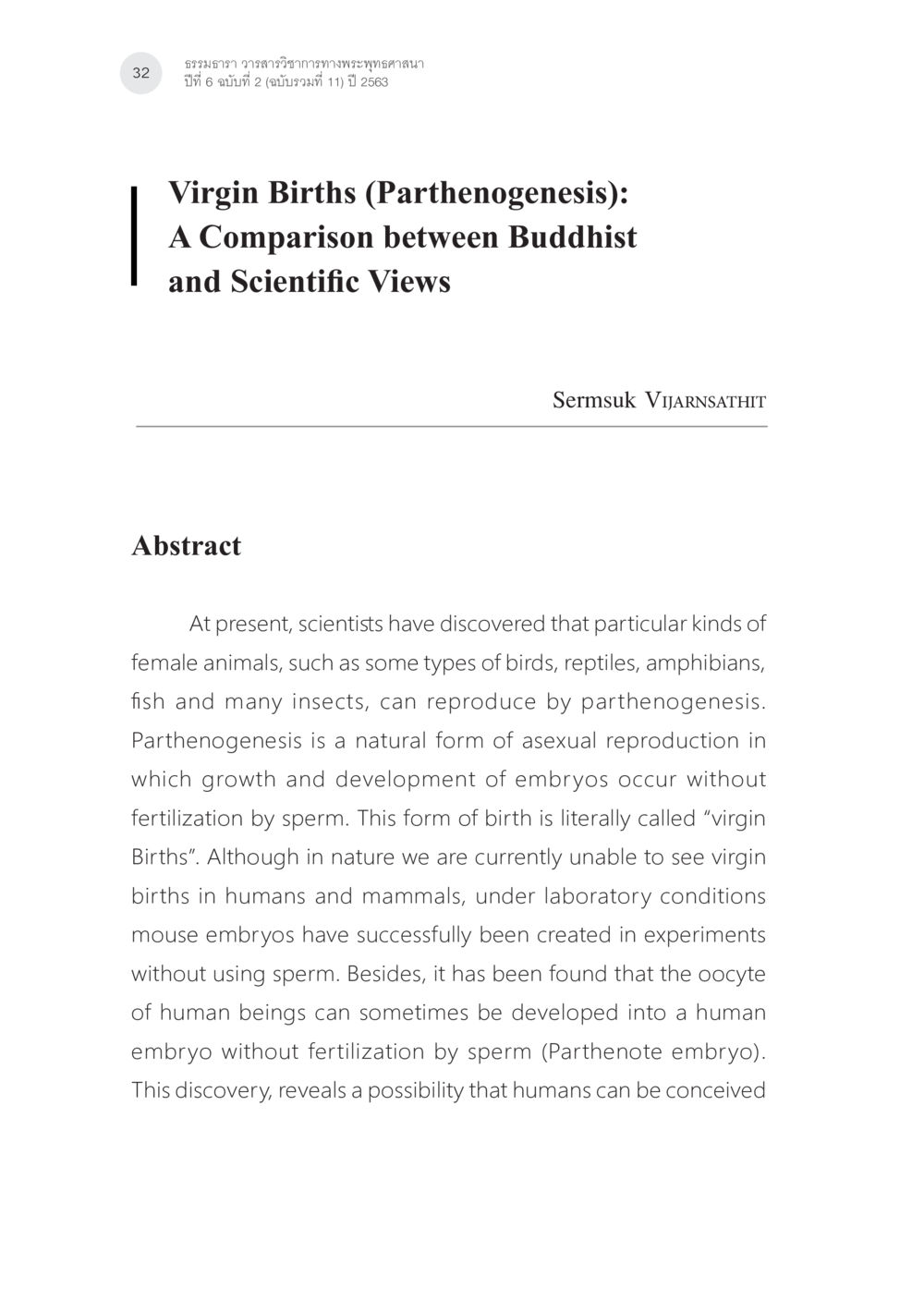Virgin Births: A Comparison between Buddhist and Scientific Views : หน้า 4/30
การตั้งครรภ์บริสุทธิ์ (ตั้งครรภ์แบบบไม่อาศัยเพศ) ในพระพุทธศาสนาและวิทยาศาสตร์ : หน้า 4/30 Explores parthenogenesis in nature and its implications in Buddhism and science.
0 ครั้ง

สรุปเนื้อหา
บทความนี้วิเคราะห์การเกิดแบบปราศจากการปฏิสนธิ (การเกิดแบบปาติเกนีซิส) โดยยกตัวอย่างสัตว์บางชนิดที่สามารถสืบพันธุ์ได้โดยไม่ต้องให้ผู้ชายปฏิสนธิ ในขณะที่การศึกษาทดลองในห้องปฏิบัติการแสดงให้เห็นว่าเป็นไปได้ที่อสุจิของมนุษย์จะพัฒนาต่อไปเป็นเอ็มบริโอได้ โดยไม่ต้องมีการปฏิสนธิ ซึ่งเคยเป็นความคิดที่ยากต่อการเชื่อในบริบทของพระพุทธศาสนา
หัวข้อประเด็น
-Parthenogenesis
-Buddhism and Science
-Virgin Births
-Asexual Reproduction
-Human Embryo Development
ข้อความต้นฉบับในหน้า
ธรรมนธรรม วารสารวิชาการทางพระพุทธศาสนา
ปีที่ 6 ฉบับที่ 2 (ฉบับรวบรวมที่ 11) ปี 2563
32
Virgin Births (Parthenogenesis):
A Comparison between Buddhist
and Scientific Views
Sermsuk VIJARNSATHIT
Abstract
At present, scientists have discovered that particular kinds of female animals, such as some types of birds, reptiles, amphibians, fish and many insects, can reproduce by parthenogenesis. Parthenogenesis is a natural form of asexual reproduction in which growth and development of embryos occur without fertilization by sperm. This form of birth is literally called “virgin Births”. Although in nature we are currently unable to see virgin births in humans and mammals, under laboratory conditions mouse embryos have successfully been created in experiments without using sperm. Besides, it has been found that the oocyte of human beings can sometimes be developed into a human embryo without fertilization by sperm (Parthenote embryo). This discovery reveals a possibility that humans can be conceived
หนังสือที่เกี่ยวข้อง
Load More






























